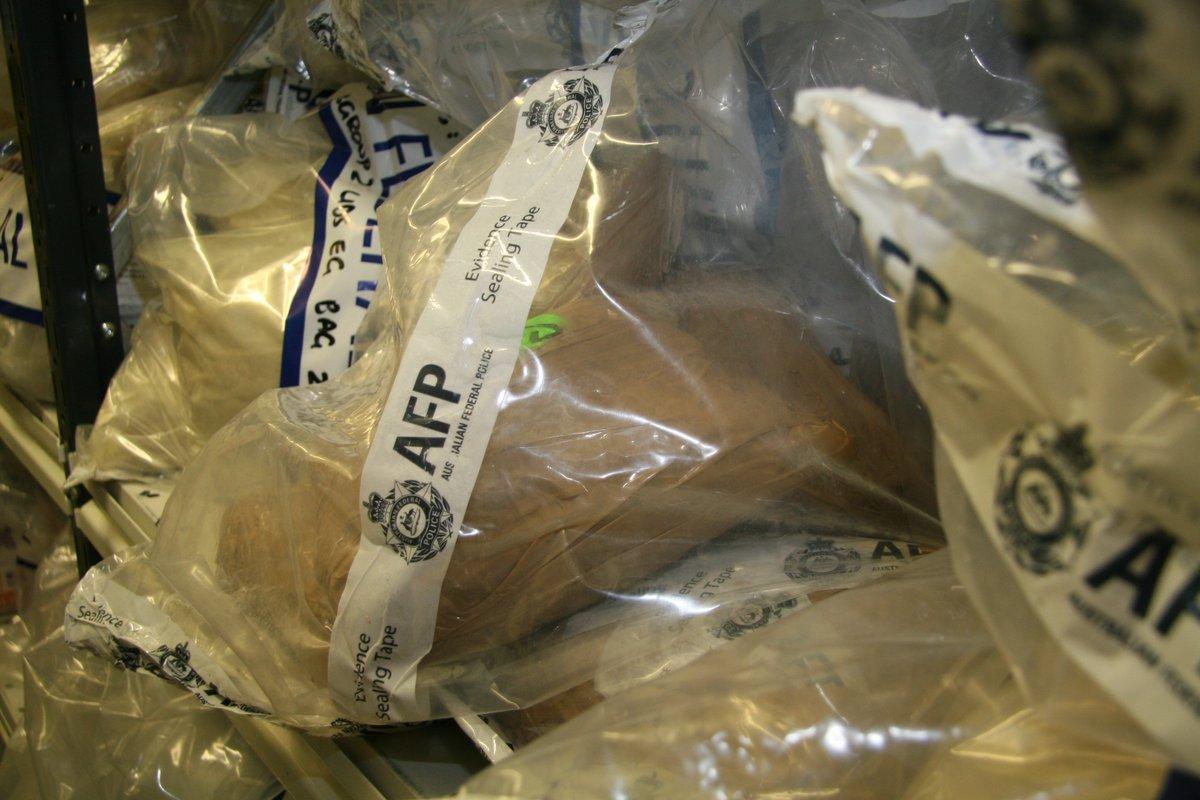Australia needs to ramp up response as criminals diversify drug supply chains
Posted By John Coyne on October 11, 2018 @ 13:58

Last month, the Australian Criminal Intelligence Commission (ACIC) released its Illicit drug data report [1] (IDDR), an annual analysis of drug seizures and arrests. The report’s findings, coupled with data from the ACIC’s national wastewater drug monitoring program [2], provide an unprecedented level of detail on Australia’s illicit drug demand and supply patterns.
Surprisingly, the news isn’t universally bad across all illicit drug types.
In terms of Australia’s heroin [3] use, the supply and demand indicators reveal that we have a small and relatively stable market. Given the soaring rates of heroin use in North America [4], this result should be viewed very positively.
The picture of domestic production of amphetamines (ice) and MDMA (ecstasy) is less clear. The overall number of clandestine laboratories detected producing these drugs decreased for the fifth consecutive year. At the same time, however, the number and overall weight of ice precursor seizures at the border has continued to rise. The rise in precursor importations suggests that a small number of large-scale clandestine laboratories are still operating in Australia.
Australia’s ice market, despite all the government’s programs, remains large—though it is stable. Surprisingly, the weight and frequency of ice detections at the border declined for a second year. That could be a sign of changes to the transnational ice supply chain. It provides at least some evidence of a movement from the importation of ice to local production. It must be noted, however, that there’s insufficient evidence to be certain of this trend.
With the rapid increase in the production of high-purity ice in Myanmar and Laos, the ASEAN region faces a potential oversupply of the drug. Australian authorities will need to be alive to the possibility of cheaper ice and the effect that might have on user trends. One indicator of such a change would be an increase in the amount of ice seized at the Australian border.
In contrast, MDMA detection at the border remains low, but importation detections are at a record high. The change in supply dynamics could be an early indicator of a shift in recreational drug user preferences away from ice. This seems a logical possibility for some segments of the illicit drug user market, especially recreational users, given the ongoing public education campaigns about the dangers of using ice.
All of these changes are minor in comparison to Australians’ increased use of cocaine. The IDDR’s supply and demand data indicate an expansion in the Australian cocaine market. And the news only gets worse. The number and weight of cocaine detections at the border are at record levels. And the wastewater monitoring program identified an increase in cocaine use between 2016 and 2017 across all capital cities and regional sites in all states and territories.
The increased availability of cocaine needs to be understood in terms of global production and usage trends. Global production of cocaine is reaching record highs, with a 31% [5] increase in Colombia alone over the last 12 months. At the same time, North America has been experiencing dynamic changes in heroin and ice use. Arguably, the North American cocaine market has reached a point of saturation and, more than likely, oversupply.
These changes have spurred Latin American organised crime groups to move into the production and supply of ice and heroin for the US and Canada. In some cases, Mexican cartels have been involved in trading cocaine for amphetamine precursors in China to try to address surpluses. The draw of our highly profitable market has also resulted in an increasing flow of cocaine across the Pacific to Australia.
It’s inevitable that the global oversupply of ice and cocaine will result in organised crime groups redirecting supply chains to exploit Australia’s ravenous appetite for illicit drugs.
The front line for Australian authorities tackling cocaine will likely continue to be the Pacific. The region has long been used by South American groups to ship the drug to Australia. Renewed Australian investment in the the Pacific Transnational Crime Network (PTCN) should be central to our response.
Since 2002, the PTCN [6] has provided a ‘police-led proactive criminal intelligence and investigative capability to combat transnational crime in the Pacific’. The network comprises 25 locally staffed transnational crime units spread across 17 Pacific island countries. Based in Apia, Samoa, the Pacific Transnational Crime Coordination Centre performs a central coordination role, managing, enhancing and disseminating law enforcement intelligence to member countries and other international partners.
Maritime and air domain awareness is crucial for disrupting the Pacific cocaine route and an area in which Australia has much to offer to the PTCN.
Diversification of global supply chains is a consistent theme in the distribution of both cocaine and ice. Chinese organised crime groups continue to play an important role in the supply of both ice and its precursor chemicals around the world.
The volume and purity of ice produced in Myanmar and Laos have increased dramatically over the past two years. And both countries are quickly becoming the new front line in attempts to disrupt the illicit drug supply in the region.
Over the last few years, the Australian Federal Police has been increasingly active in Myanmar in terms of cooperation, capacity development and intelligence-sharing. And it has continued efforts to operationalise its relationship with Laos’s authorities. What’s clear is that Australian law enforcement cooperation and capacity development in the Mekong with Myanmar and Laos need to be further enhanced before the problem gets any worse.
Article printed from The Strategist: https://aspistrategist.ru
URL to article: /australia-needs-to-ramp-up-response-as-criminals-diversify-drug-supply-chains/
URLs in this post:
[1] Illicit drug data report: https://www.acic.gov.au/publications/intelligence-products/illicit-drug-data-report-0
[2] national wastewater drug monitoring program: https://www.acic.gov.au/publications/intelligence-products/national-wastewater-drug-monitoring-program-report
[3] heroin: https://www.acic.gov.au/sites/g/files/net3726/f/2018/09/iddr_2015-16_snapshot.pdf
[4] North America: https://www.theguardian.com/society/2017/mar/29/us-heroin-use-has-increased-almost-fivefold-in-a-decade-study-shows
[5] 31%: https://www.channelstv.com/2018/09/19/cocaine-production-jumps-31-percent-in-colombia/
[6] PTCN: https://picp.co.nz/our-work/pacific-transnational-crime-network-ptcn/
Click here to print.